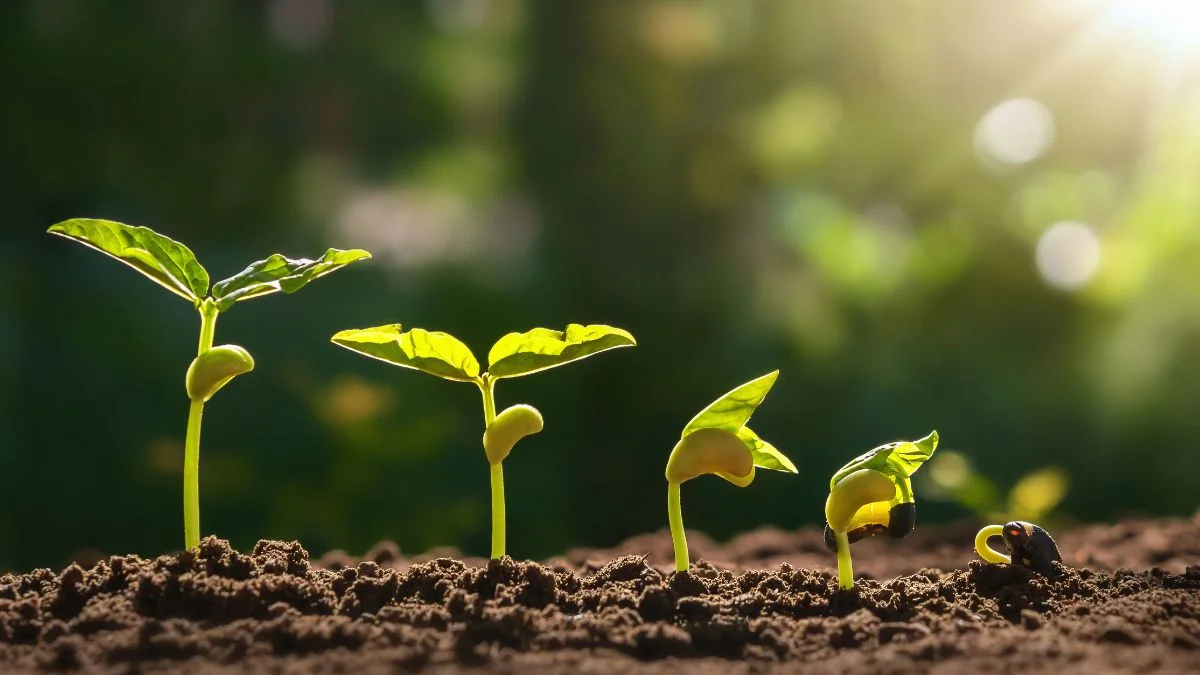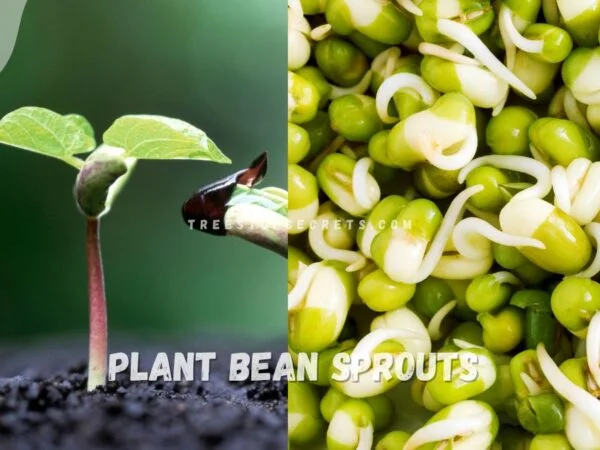
Wondering, "What seeds grow fast?" Don't worry; I've got you covered! Understanding the factors that influence seed germination and growth rate is crucial. Factors like soil temperature, moisture levels, and seed type play significant roles. Certain seeds, like radishes and beans, are known for their rapid growth. These seeds typically germinate quickly and develop into mature plants within a few weeks under optimal conditions. However, it's essential to consider factors such as climate and seasonality when selecting seeds for your garden to ensure successful and speedy growth.
When it comes to determining which seeds grow the fastest, it's essential to consider various factors. Radishes, for instance, are known for their rapid growth, often sprouting within a week of planting under favorable conditions. Beans, both pole and bush varieties, also exhibit fast growth, typically reaching maturity within 50 to 60 days after planting. On the other hand, seeds like carrots and onions have slower growth rates, taking several weeks to months to reach maturity. Therefore, for gardeners seeking quick results, selecting seeds like radishes and beans would be ideal. However, it's crucial to provide adequate water, sunlight, and nutrients for optimal growth.
Curious to explore further? Dive deeper into the fascinating world of gardening and discover a plethora of tips and tricks to maximize seed growth and yield. From understanding soil composition to experimenting with different planting techniques, there's always more to learn. So, whether you're a seasoned gardener or just starting, there's a wealth of knowledge waiting to be unearthed!
Key Takeaways
- Select fast-growing seeds: Choose seeds like radishes, lettuce, and beans for quicker growth.
- Prepare nutrient-rich soil: Prioritize soil preparation by adding compost or organic matter for optimal seed growth and quick germination.
- Monitor growth consistently: Keep track of plant progress by observing growth patterns and adjusting care as needed.
- Harvest at the right time: Harvest crops when they reach maturity to enjoy the fruits of your labor.
- Engage kids in hands-on garden activities: Encourage interactive learning by involving students in planting, monitoring, and harvesting processes.
- Encourage observation and analysis: Foster critical thinking by prompting students to analyze growth data and draw conclusions from their observations.
Gathering Supplies
Ziploc Bags
Label each Ziploc bag with the seed type and planting date. Ensure proper sealing for a mini greenhouse effect. Place in a warm, sunny spot.
Biodegradable Pots
Use peat, coconut coir, or paper pots. Directly plant to reduce transplant shock. Choose size based on growth requirements.
Red Clay Pots
Red clay pots offer good drainage to prevent waterlogging. Soak before planting for moisture retention. Select sizes according to growth potential.
Empty Egg Shells
Utilize eggshells as natural starters. They provide calcium for seedlings and soil nutrients when crushed.
Soil Types
Pick well-draining soil mixes suitable for different seeds. Add perlite or vermiculite for aeration improvement. Test pH levels for optimal growth conditions.
Fast Seeds Overview
Classroom Gardening
Engage students in hands-on activities by planting seeds in the classroom. Discuss sunlight, water, and nutrients' importance for seed growth. Create a schedule for watering and monitoring seed progress.
Quick Growth Crops
- Choose radishes, lettuce, and basil for quick results.
- Monitor growth stages to understand plant development.
- Harvest at the right time for fresh produce.
Vegetable Seeds
Experiment with various vegetable seeds to observe growth variations. Provide adequate spacing to prevent overcrowding. Support vine-type seeds with trellises for vertical growth.
Preparing the Soil
Mixing Components
- Combine Seed Starter Mix with organic compost for nutrient-rich soil.
- Mix components thoroughly to ensure even distribution of nutrients.
- Adjust component ratios based on seed requirements for optimal growth.
Pot Filling Technique
- Layer the pot with soil mix, leaving enough space for seed planting.
- Gently press the soil to eliminate air pockets that may hinder seed growth.
- Water the potting mix lightly after filling to prepare for seed planting.
Seed Selection
Top 13 Fast-Growing
Herbs
- Basil and parsley are beginner-friendly herbs that sprout quickly from seeds.
- Regular pruning of herb plants encourages denser foliage and better growth.
- To ensure continuous growth, harvest herb leaves frequently for optimal development.
Vegetables
- Tomatoes and peppers are fast-growing vegetables that need consistent watering for healthy development.
- Supporting tall vegetable plants with stakes or cages prevents them from bending under their weight.
- Rotating vegetable crops annually helps maintain soil fertility and reduces the risk of diseases.
Flowers
- Experiment with a range of fast-growing annual flowers such as marigolds and cosmos for quick results.
- Planting perennial flowers in well-draining soil is crucial to prevent issues like root rot.
- Regularly removing faded blooms, known as deadheading, ensures continuous flowering throughout the season.
Educational Use Seeds
- Introducing educational seed kits can offer engaging learning experiences for all ages, including kids.
- Including seeds with varying germination times allows learners to observe different growth stages firsthand.
- Complement the seed planting activity with educational worksheets tailored to enhance understanding.
Planting Process
In Ziploc Bags
Placing damp paper towels with seeds inside Ziploc bags creates a moist environment for germination. Securely seal the bags to retain moisture, aiding seed sprouting. Daily checks on the Ziploc bags help monitor seed progress, adjusting sunlight exposure as needed.
In Egg Shells
Filling empty eggshells with soil mix provides a natural seed starter environment. Utilize egg cartons to organize eggshell seed starters conveniently. Gently water the eggshell seed starters to prevent washing away seeds during watering.
In Pots
Utilize pots with drainage holes to prevent water accumulation around seeds, ensuring proper growth conditions. Grouping similar seeds in pots simplifies watering and care routines, promoting healthy plant development. Regularly rotating pots guarantees all sides of the seedlings receive adequate sunlight for optimal growth.
Growth Monitoring
Watering Schedule
Establish a consistent watering schedule to meet the moisture needs of different seeds. Use a spray bottle for delicate seedlings, preventing overwatering that can harm growth. Adjust watering frequency in hot weather to avoid soil dryness.
Sunlight Exposure
Position seeds in areas with ample sunlight for photosynthesis, crucial for rapid growth. Rotate seed trays regularly to ensure all seedlings receive uniform sunlight exposure promoting even development. Watch for signs of sunburn on seedlings and adjust sunlight exposure accordingly.
Growth Charting
Create a growth chart to monitor the various stages of seedling development accurately. Keep track of daily observations like leaf growth and stem height changes. Utilize a ruler or measuring tape for precise measurements, ensuring accurate tracking of growth progress.
Harvesting Lessons
Harvest Time
Harvest crops at peak ripeness for best flavor. Check seed packets or online resources for specific harvest times. Engage children in harvesting to teach about plant life cycles.
Usage Ideas
- Explore creative ways to use harvested herbs in recipes or crafts.
- Share surplus vegetables with neighbors or local food banks.
- Dry flowers for decorative arrangements or potpourri.
Classroom Activities
Growth Diary
Maintain a growth diary to track seed planting dates and growth milestones. Include photos of seedlings at different stages for progress tracking. Reflect on challenges and lessons learned during the seed growth process.
Plant Identification
Label plants with their names for easy identification of different seedlings. Use plant markers or popsicle sticks for clear plant labeling. Group similar plants together to streamline care routines.
Cooking Day
Plan a cooking day to create dishes using homegrown vegetables and herbs. Involve family members in cooking activities to savor the results of gardening efforts. Experiment with new recipes incorporating freshly harvested produce.
Closing Thoughts
As you've learned about gathering supplies, selecting fast-growing seeds, preparing the soil, planting effectively, monitoring growth, harvesting, and engaging in classroom activities, you're now equipped with the knowledge to kickstart your fast seed growing journey successfully. Remember to stay consistent in your efforts and keep a close eye on your plants' progress. By following these steps diligently, you'll soon reap the rewards of your hard work with a bountiful harvest and valuable lessons learned along the way.
Take action now! Gather your supplies, choose your seeds wisely, and get your hands dirty in the soil. Your fast-growing garden awaits you. Share your experiences with others and inspire them to embark on their own gardening adventures. Happy planting!
Frequently Asked Questions
What are the essential supplies needed for fast seed growth?
To grow seeds quickly, you will need high-quality seeds, nutrient-rich soil, adequate sunlight, water, gardening tools, and plant markers. Using organic fertilizers and compost can also boost growth speed.
How do I select the best seeds for fast growth?
Choose seeds labeled as fast-growing varieties such as lettuce, radishes, and sunflowers. Look for seeds that germinate quickly and have short maturity periods. Opt for non-GMO and heirloom seeds for better results.
What is the importance of monitoring seed growth progress?
Monitoring seed growth helps you track development stages, detect issues early on, adjust care routines if needed, and ensure optimal conditions for faster growth. It allows you to intervene promptly to maximize the chances of successful harvests.
Can classroom activities enhance the learning experience of seed growth?
Engaging students in planting activities fosters hands-on learning experiences. Classroom activities like seed germination experiments, plant life cycle observations, and garden maintenance teach valuable lessons about nature, biology, responsibility, and patience while promoting environmental awareness.
How can I optimize soil preparation for fast seed growth?
Prepare soil by removing debris, loosening it to improve aeration and drainage. Amend with organic matter like compost or aged manure to enrich soil nutrients. Test soil pH levels and adjust if necessary to create an ideal environment for rapid seed germination and growth.
Image Source: Paid image from CANVA




